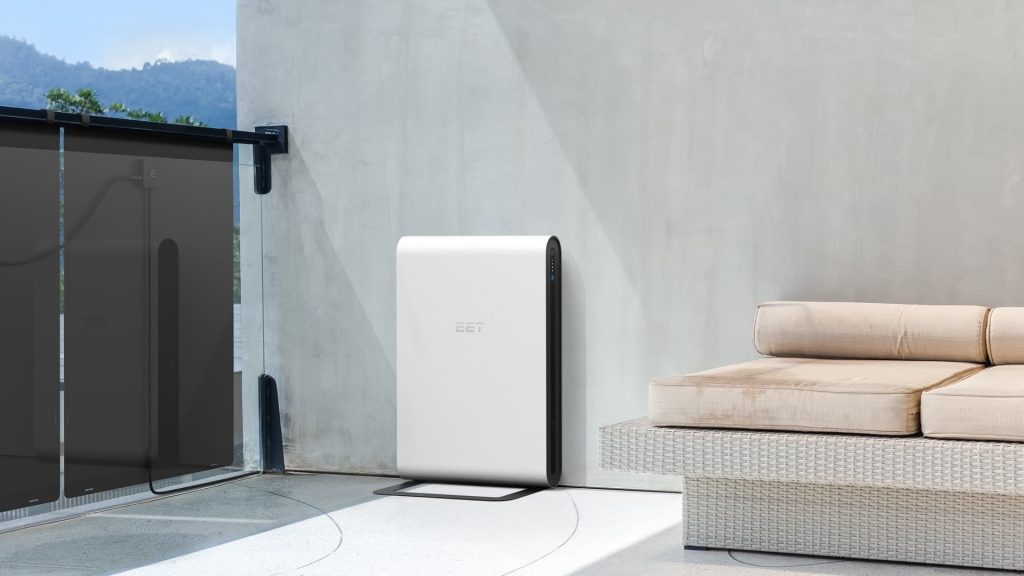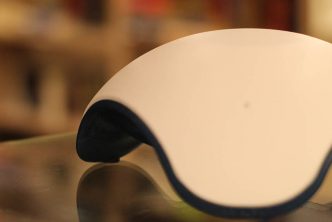Micro-voltaic systems are easy to install and easy on the wallet. This means that (almost) everyone can make a contribution to the energy transition.
High electricity prices have given a powerful boost to alternative energy generation. So-called balcony power plants are currently in particularly high demand – mini photovoltaic systems that are simply attached to or set up on the outside of the balcony instead of on the roof. A small inverter converts the direct current generated by the balcony power plant into alternating current and feeds it into the apartment grid.
The success of such mini power plants is also due to the fact that they can be put into operation completely unbureaucratically by anyone and then make their contribution to protecting the environment and reducing energy costs. Only a few basic requirements must be met. For example, a balcony power plant in Austria may not supply more than 800 Wp (Watt peak), while in Germany the limit is 600 Wp. That doesn’t sound like much – any toaster needs more power. In total, however, the mini power plants are able to cover the base load of an average household during the day and, for example, provide the energy supply for a home office.
A balcony power plant also does not need any special permits in this country; the grid operator only has to be informed two weeks before commissioning. Another condition: There must be a fixed connection to the network. For this purpose, an ordinary Schuko socket on the balcony is sufficient.
Balcony power plant: to be installed without a permit
The panels are suitable for virtually any house or apartment with a balcony, preferably, of course, on the south side. But even oriented to the north, the panels can still be used in a pinch. However, the balcony power plant then only supplies a good half of the power. In order to optimize the energy yield, it may then make sense to increase the area of the photocells. The 800 Wp limit in fact only applies to the power of the inverter, but not to the panels.
However, even if in principle it is allowed to install the panels, but you should first consult your landlord or co-owners. There are still major reservations about the appearance or damage to the building fabric. At least when it comes to optics, the landlord has the final say.
Network operators are often skeptical
Grid operators also seem to be rather critical of balcony power plants. Thus, they repeatedly claim that installations with a Schuko plug are prohibited. The Federal Guild for Electrical Engineering even speaks to the VKI of a danger to life and limb. They refer to the electrotechnical standard OVE E 8101, which provides for professional wiring by electricians, even for very small systems . However: This standard is not binding. And a study by the Frauenhofer Institute commissioned by the regulatory authority E-Control concludes that there is no significant risk from 800 watt systems. E-Control felt compelled to explicitly set out the framework conditions once again in a separate paper. Board member Alfons Haber clarified to the APA: “Even with Schuko plugs, these small-scale generation systems are permitted”. And bringing in an electrician, as some of the grid operators require, is “purely a recommendation,” according to Haber.
It is worth buying the balcony power station in a reputable specialized store. Only this guarantees compliance with all safety standards. A whole series of suppliers ran the mini power plants already assembled ready to use, including assembly materials. These include the start-up EET from Graz, founded in 2017, and base.energy from Vienna. However, demand is currently very high, and many companies cannot keep up with deliveries. At the moment, you have to expect delivery times of eight weeks and more. Unfortunately, this is not expected to improve in the coming year.
A balcony power plant pays for itself in a few years
Depending on the desired performance and equipment, such balcony power plants are already available from about 500 euros. HTW Berlin has developed a calculator that can be used to estimate when such a system will pay for itself. For a 430 watt module, the calculator sets an investment of 470 Euros. This can generate up to 300 kWh of electricity per year when mounted vertically on a south-facing balcony. Of this, it is estimated that just under 270 kWh can be used by the company itself and thus deducted from the electricity bill. By comparison, a washing machine that runs twice a week uses about 400 kWh. At electricity prices of 35 cents/kWh, this saves 94 euros per year, and the investment is recouped after 6 years.
The whole thing becomes even more effective when the panels are mounted with an angle of attack of 20 degrees, for example, also on a stand. However, experts like Volker Quaschning from HTW Berlin advise against making the extra effort. “In the end, it makes little difference to private households whether the system is oriented at 90 degrees or 70 degrees,” Quaschning told Handelsblatt.
Father state finances with
But the investment pays off more quickly if you ask the State for support. The experts of dachgold.at estimate that there are over 100 promotion pots in Austria with federation, country and municipalities. The Styrian capital Graz, for example, pays 60 percent of the acquisition costs for the purchase of a micro-photovoltaic system for the balcony, up to a maximum of 600 euros.
As with all power plants, the electricity generated by balcony power plants must be consumed immediately. If more energy is generated than can be used, then the electricity is given away. Separate billing to the network operator is not economical due to the small quantity – however, the network operator may insist on the installation of a new meter with a backstop. An alternative would be to store the electricity in a battery. However, this drives up investment costs significantly, and the cost-benefit ratio also speaks against this solution.
Incidentally, such a mini power plant can not be used as an emergency power supply. This is ensured by the prescribed “automatic disconnecting point/network decoupler”, as it is called in technical jargon. This stops the feed immediately when the power fails. This protects against electric shocks at the plug and during maintenance work on the house network.








